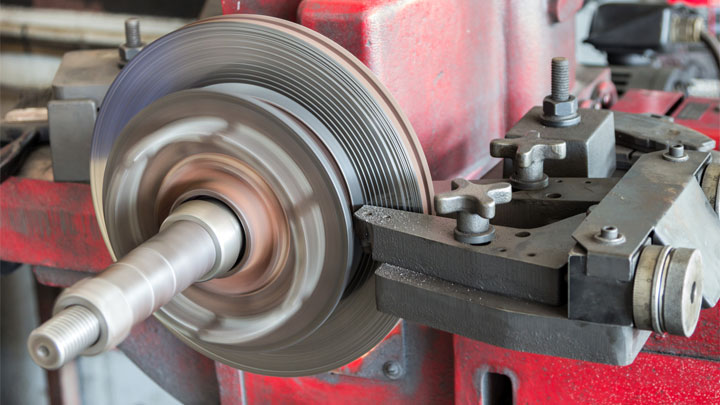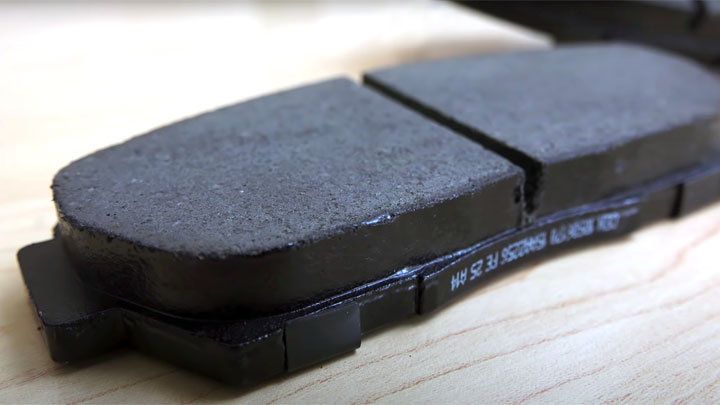Last Updated on August 26, 2022
When planning to perform a brake job you will always be faced with these three questions: Should I replace the rotors? Or should I simply have them resurfaced? And how do I decide?
Before digging into this topic let’s point out that for most brake jobs the rotors should either be resurfaced or replaced. Not performing either of these maintenance steps in some cases may be fine, but can result in accelerated wear of the new brake pads and degraded stopping power.
Some repair shops prefer not to resurface rotors but to replace them with new ones for every customer when performing a complete brake job. This approach eliminates the time required for rotor resurfacing and may provide the customer with rotors that include a manufacturer’s warranty.
Resurfacing Brake Rotors

What Does Resurfacing Mean?
Resurfacing means machining the brake rotor surfaces using a shop tool called a brake lathe. This can easily be done after removing the rotor from the car. But also a special lathe that attaches to your car can be used for this job eliminating the need for rotor removal.
The machining process removes rotor distortion and thickness variations. It also establishes a proper surface finish so that the new pads will bed in properly. All this helps improve stopping power and can add to brake pad life.
All brake rotors have a minimum thickness. Generally this is marked on the rotor. Resurfacing must not be done if after the machining process the rotor will be thinner than this minimum limit.
When Should Rotors be Resurfaced?
There are two different situations that indicate rotor resurfacing is needed:
#1 – When Replacing Brake Pads
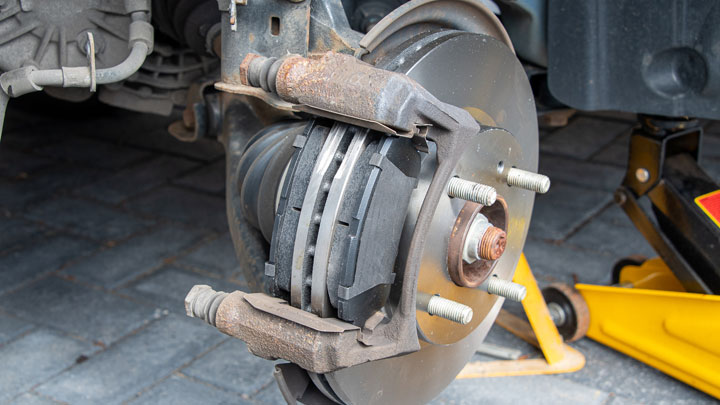
The first is when you are replacing worn out brake pads. Having the rotors machined ensures best brake performance and life for those new pads. And frequently rotor resurfacing will be essential if the old pads have scored the rotor surfaces. In removing this damage the rotor friction surfaces will be restored to new condition.
Related: How Long Do Brake Pads Last on Average?
#2 – Pulsations When Braking
The second is when you are noticing pulsations in your braking during gradual stops. You may either feel it in the brake pedal or in the uneven motion of your car during deceleration.
Pulsation comes from uneven wear on rotor surfaces and/or uneven deposits of pad friction material. Thickness variations can be detected by using a micrometer to measure the disk at several locations. Or a dial indicator can be used to detect surface variations as the rotor is turned by hand.
In general, a thickness or surface variation as little as 0.001 inch will cause the brake and pedal reactions discussed above.
See Also: Uneven Brake Pad Wear Causes
How Much Does It Cost to Resurface Rotors?
Resurfacing cost per rotor can vary widely. If you remove your rotors yourself and take them to a shop or parts store for resurfacing, the cost can range from as little as $15 to over $45 per rotor.
To have a repair shop remove, resurface and reinstall your rotors can cost up to $100 per wheel, $400 for the whole car. And the removal/reinstallation and machining process can be even more costly for some four wheel drive SUVs, pickup trucks and high performance sedans and sports cars.
What Places Resurface Rotors?
Rotor resurfacing can generally be done by most auto repair shops that perform brake jobs. And some auto parts stores can provide rotor machining as well.
Can Drilled and/or Slotted Rotors be Resurfaced?
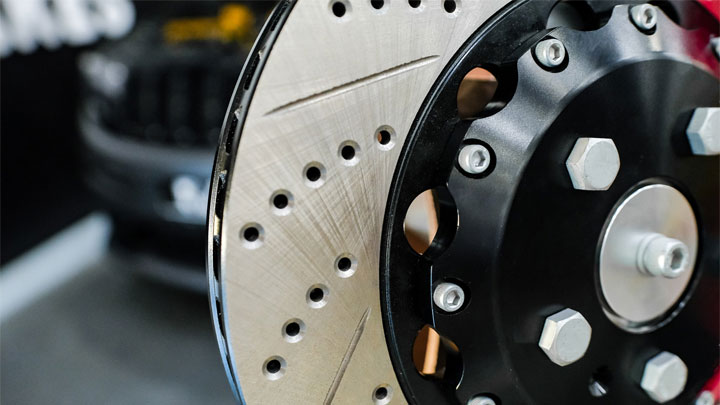
Rotors today are sometimes drilled and/or slotted to enhance braking performance. If your car has such brake discs, they can be successfully resurfaced by an experienced shop. However, the machining process for these rotors does increase risk of breaking the cutting tool while turning the rotor on the brake lathe.
This is caused by the intermittent cut as rotor holes or slots pass beneath the tool point. Some shops will not take this risk. If you have such rotors and want them resurfaced, you should call your local parts store or brake shop to confirm they can turn (re-machine) them.
Can the Rotors on All Makes and Models of Cars be Resurfaced?
The answer to this question is, no. Some carmakers require that new rotors always be installed when brake pads are replaced. You should contact your dealer’s service department to answer this question before you take steps to get your brake rotors resurfaced.
Replacing Brake Rotors
When Should You Consider Replacing Your Rotors?
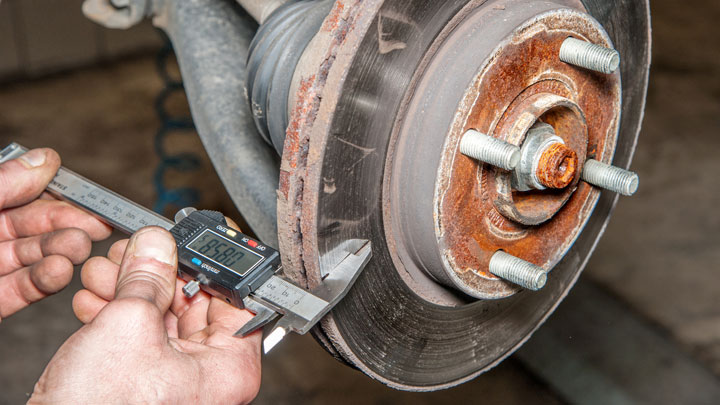
At any point in time when you need new brake pads or your brakes display uneven braking or pulsation as discussed earlier, rotor replacement is the most durable option.
This step puts new rotors, each with full disk thickness, on your car. Such rotors will generally last longer and provide better stopping performance than re-machined ones.
If you hear grinding, squealing, or scraping noises when applying your brakes, this could indicate warped, damaged, or worn out brake rotors. All of these would make brake rotor replacement necessary.
Winter climate conditions lead to the application of salt on the roadways especially in the northern US. This combined with winter moisture can cause a great deal of corrosion to your car including the brake rotors.
Such corrosion can partially or completely block the radial cooling passages typical in the front brake disks and often at all four wheel positions. This damage can degrade stopping power.
New rotors at every complete brake job best resolve this particular issue.
Additionally, if the rotors on your car have been resurfaced one or more times, they may no longer be sufficiently thick for another re-machining process. New rotors are definitely required in this situation.
Related: 5 Symptoms of Worn Brake Pads
How Much Does it Cost to Replace Rotors?
Purchasing new rotors may be not much more costly than getting the old ones resurfaced. If buying from a parts store, some imported rotors can cost as little as $50 each.
At the opposite extreme, bigger rotors on large pickup trucks or two-piece rotors found on some high performance cars can cost as much as $1000 each. This pricing could be even more startling at your dealer.
A couple of phone calls to your parts store or dealer can provide insight into just how much those new rotors will impact your wallet.
If you are having your car’s brakes serviced at a repair shop, the new rotor cost will be partly offset by the lack of need for resurfacing the old ones, so this should be considered as well.
And you could be favorably surprised by a reasonable cost quote for this process at your dealer depending on the make and model of your car.
Can You Replace Brake Rotors on Your Own?
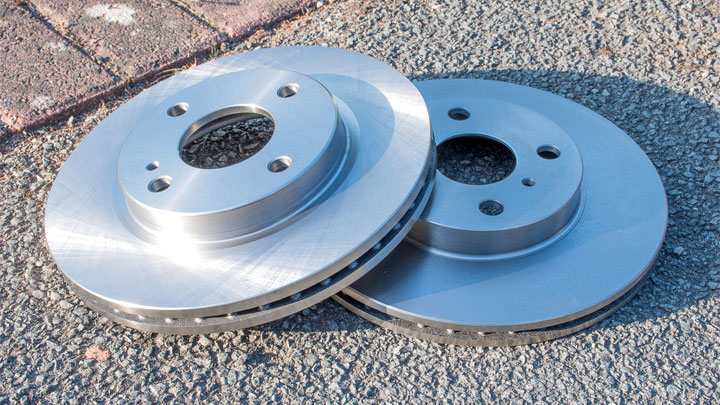
This question could most accurately be answered by purchasing a service manual for your car. Taking a look in this book, website, or CD-ROM will show you the process for removing and reinstalling a brake rotor and any special tools required. This will help answer the question whether you want to do the job yourself.
To summarize, for most rear wheel drive cars, the rotor removal/replacement process at each wheel location would likely be fairly simple for a good DIYer.
Front rotor removal for front drive cars can sometimes be a bit more difficult. And four wheel drive SUVs or pickup trucks might pose challenges too great for the home repair guy or gal.
A Word About Bedding-in New Brake Pads and Rotors
Elsewhere on this site, the article How To Change Your Brake Pads (Step-by-Step) will give you insight into removing and replacing brake rotors. It will also, in Step #16, explain how to bed-in new pads and rotors during this process.
Proper bedding initializes and prolongs good brake performance and lessens the chance of brake noise after a brake job. This procedure can help minimize the risk of needing rotor resurfacing or even replacement during the miles between full brake jobs.

